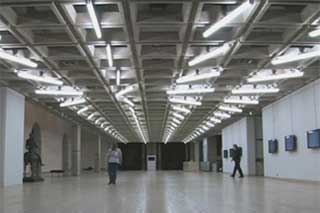
With the advent of Windows 7 and the upgrades to the MS Office franchise, the talk is that there’ll be a big round of corporate upgrades. Many corporations are still running Windows XP, Internet Explorer 6.x and Office 2003 (or lower). Vista didn’t tempt them, but the good press for Windows 7 is supposed to do the trick. After all, they have to upgrade at some point, right?
If corporate America takes the plunge, one has to wonder if this will be the last upgrade cycle of this kind. The distribution and installation of software on to desktop and laptop computers is a messy business. Businesses require a very compelling reason to upgrade given the current model.
Google has put forward the model of the browser as operating system by working backwards from the Chrome browser to the Chrome OS. The integration of the Office Suite into the hardware starts in the cloud and moves to the local machine. When Microsoft tried a similar move in the other direction, the government stepped in.
Both Google and Microsoft have developed cloud-based Office Suite offerings moving from opposite directions. Looking down the road a bit, we can see that the next upgrade cycle will be “software + services” for Microsoft, and “services + software” for Google. The obvious motivation will be cloud-based software’s cost savings over the current model of distribution, installation, compatibility, upgrade and service of software installed on a local system. The sheer cost and pain of a firm-wide software upgrade is so frightening that most corporations defer it as long as possible. It’s entirely possible that some firms will skip the last installation and jump directly to the cloud.
Collaboration within the enterprise takes place via email, attached documents and shared network drives. The productivity software footprint defines the boundaries of the modes of collaboration. The big real-time innovation was the introduction of mobile push email via the Blackberry. This innovation reduced latency in the work process by detaching email from the desktop and allowing it to accompany a person wherever she might go. The introduction of Sharepoint and network-stored group editable documents is slowly seeping into the work process. But most corporate workers don’t know how to collaborate outside of the existing models of Microsoft’s Office products. Generally, this just an acceleration of the switch from production of hard copies to soft copies (typewriters to word processors). When confronted with Sharepoint, they view it as a new front-end to shared network drives, a different kind of filing cabinet.
Meanwhile in the so-called consumer space, Facebook, Twitter and a host of real-time social media services have radically reduced the latency of group communication and collaboration. In addition to text– photos, audio and video have begun to play an important role in this collaboration stream. For the most part the corporate computing environment has been left behind. This is due to two factors, the desire to maintain a certain kind of command and control of information construction and distribution within the walls of the corporation; and the desire of IT departments to avoid risk by maintaining a legacy architecture. The real-time productivity of the Blackberry has been working its way down from the top of organizations; but the tool set remains the word processor, powerpoint and excel. The only accelerant in the mix is faster mobile email of soft copies of documents.
Ray Ozzie discusses the “3 screens and a cloud” model as the pattern for the development of human-computer interactions across both the consumer and enterprise computing spaces. The missing element from this model is the input device, screens are no longer simply an interface for reading. Bits are moving in both directions, and email is being de-centered as the primary message carrier.
As we look at innovations like Yammer and Google Wave, the question becomes how will the corporate worker learn how to collaborate in real time? Accelerating network-stored documents and their transmittal via email moves the current model to near maximum efficiency. Further productivity gains will need to expand and change the model. Generally these kinds of innovations enter through the back door, or through a skunk works project, within small autonomous teams. But at some point, the bottom up innovation needs top down acceptance and support.
Luke Hohman of Enthiosys works with the concept of serious games in the management and development of software products. The collaboration processes he describes in his presentation to BayCHI may be the foundation for real-time collaboration throughout the enterprise.
- Luke Hohmann on Serious Games: Luke Hohmann of Enthiosys on Serious Games
The lessons that we can take from Twitter and Facebook are that the leap to real-time collaboration is not one that requires a 4-year college degree and specialized training. It’s not an elite mode of interaction that needs to work its way down from the executive leadership team. It’s an increasingly ordinary mode of interaction that simply needs to be unleashed within the enterprise. But for that to happen, the enterprise will need to learn how to incorporate self-organizing activity. (Oh, and let employees use the video camera and microphone built in to their hardware) This will be a difficult move because the very foundation of the corporation itself is the creation and optimization of managed hierarchical organizational structures. It’s only when the activity of serious play can be reconciled with return on investment that the enterprise will come to terms with real-time collaboration.






